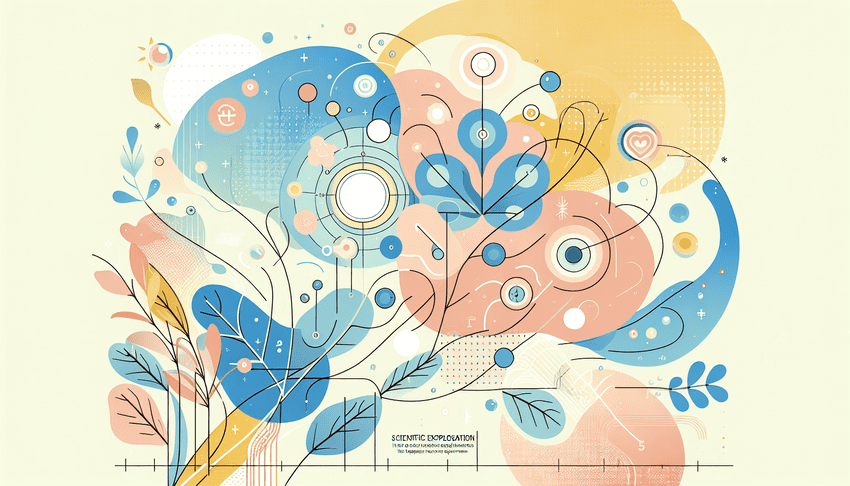Table of Contents
Foundations of Positive Psychology

The Science of Well-Being: Exploring Subjective Happiness
Happiness Research stands at the forefront of exploring what makes us feel fulfilled and content in our lives. Delving into the subjective nature of happiness, it becomes apparent that well-being is not just about fleeting moments of joy but also includes a deeper sense of purpose and meaning. The scientific community, by harnessing rigorous investigative methods, provides insights into how we can cultivate a life marked not only by pleasure but by striving for personal excellence and growth.
Examining the Hedonic and Eudaimonic Perspectives Happiness Research often bifurcates the concept of happiness into two fundamental approaches: hedonic and eudaimonic. The hedonic view focuses on the attainment of pleasure and the avoidance of pain. It’s encapsulated in the moments that bring us immediate satisfaction – the taste of a favorite food, the laughter with friends, or the achievement of a personal goal. This aspect of happiness can be measured through assessments of affect balance, where researchers gauge the frequency of positive emotions against negative ones.
Conversely, the eudaimonic perspective offers a different paradigm. It suggests that true happiness is found in living in accordance with one’s virtues and potential, leading to personal growth and self-realization. Eudaimonic happiness is not just about feeling good but about being good – about the fulfillment that comes from contributing to something beyond oneself. Studies on eudaimonic well-being often examine the degree to which individuals feel their lives are meaningful, which is linked to higher psychological resilience and better physical health.
Practical application of these perspectives can be as simple as journaling to reflect on daily pleasures (hedonic) or volunteering for a cause that aligns with one’s values (eudaimonic). Both practices have been shown to enhance subjective well-being, as reflected in multiple studies within the field of Positive Psychology.
The Role of Positive Emotions and Life Satisfaction Positive emotions are integral to Happiness Research, serving as the building blocks of a happy existence. They are not just ends in themselves but also instrumental in creating a cascade of beneficial outcomes. For instance, the Broaden-and-Build Theory posits that experiencing positive emotions broadens our awareness and encourages novel, varied, and exploratory thoughts and actions. Over time, this leads to the building of lasting personal resources like social connections and coping strategies.
Life satisfaction is another key component of Happiness Research. It refers to the cognitive judgments individuals make regarding the quality of their life as a whole. According to the well-known Satisfaction with Life Scale, which measures this dimension, people who report higher life satisfaction tend to perform better in their jobs, maintain stronger relationships, and even have better immune function.
An illustrative real-life example is the contrast between two individuals: One who savors daily pleasures and expresses gratitude, typically associated with stronger positive emotions; and another who, despite adverse circumstances, is committed to meaningful goals, exemplifying the eudaimonic pursuit. Both individuals will likely report high life satisfaction, yet their paths to it may differ significantly.
In conclusion, Happiness Research provides compelling evidence that our well-being is multi-faceted, encompassing the joys of life’s pleasures and the fulfillment derived from living authentically and with purpose. Cultivating both hedonic and eudaimonic happiness can lead us to a richer, more profound sense of life satisfaction. Embedding these scientific insights into our daily routines can serve as a powerful blueprint for nurturing a happy and fulfilling life.
Pillars of Positive Emotions
The pursuit of Happiness Research is increasingly uncovering the profound effects of positive emotions on our psychological health and overall well-being. Scientific Studies Happiness has shown that experiencing positive emotions isn’t just a fleeting uptick in mood, but a crucial component of what makes life worthwhile. So, what are these positive emotions and why are they so pivotal?
At their core, positive emotions such as joy, gratitude, contentment, and love share a unifying feature—they all contribute to our sense of satisfaction and fulfillment in life. These emotions are not simply nice to have; they form the Pillars of Positive Emotions, crucial for building resilience, fostering creativity, and fueling growth. The Science of Well-being underscores how positive emotions expand our attention and thinking, forming a foundation for developing new skills and connecting with others.
One Key Finding Happiness emphasizes is the ‘broaden-and-build’ theory, which proposes that positive emotions broaden our awareness and encourage novel, varied, and exploratory thoughts and actions. Over time, this leads to building up lasting personal resources, such as social connections and coping skills. Psychological Research supports that these resources function as buffers against the challenges we face, making us less vulnerable to stress and aiding in quicker recovery from psychological distress.
Take, for instance, the role of gratitude in our daily lives. Studies have found that individuals who regularly engage in gratitude exercises—such as journaling about things they’re thankful for—experience lower levels of stress and heightened physical health. Expressing appreciation promotes greater optimism and has been linked with better immune system function, decreased symptoms of illness, and improved sleep.
Similarly, joy from engaging in meaningful activities or connecting with loved ones can lead to a cascade of positive effects. Joy fosters an openness to new experiences, which can translate into personal growth and stronger relationships. The richness that such experiences bring to our life is immeasurable and central to our perception of happiness.
It’s important to note that the cultivation of positive emotions isn’t about neglecting the negative or difficult aspects of life. Rather, it’s about acknowledging the full spectrum of human emotions and recognizing the transformative power of the positive. By nurturing positive emotions, you’re not merely escaping the negative but transcending it, paving the way for a more robust and fulfilling life experience.
By integrating these Pillars of Positive Emotions in our daily routine, be it through mindfulness practices, fostering meaningful connections, or simply taking time to savor the moment, we support the psychological groundwork that fuels our happiness and resilience. The evidence from Scientific Studies Happiness strongly encourages us to more deliberately cultivate these positive emotions, not just as a means to a happier life, but as a vital strategy for thriving in the face of life’s inevitable ups and downs.
Applications of Positive Psychology in Personal Growth

Building Emotional Intelligence: Harnessing Self-Awareness and Empathy
Happiness research has delved deep into the realms of our emotional landscape, revealing that Emotional Intelligence is a significant determinant of a person’s overall contentment and well-being. One might ask, ‘What makes Emotional Intelligence so pivotal in our pursuit of happiness?’
Building Emotional Intelligence: Harnessing Self-Awareness and Empathy
Emotional Intelligence, referred to simply as EI, is the intrinsic ability to perceive, control, and evaluate emotions. At the crux of EI lies self-awareness — the conscious knowledge of one’s own character, feelings, motives, and desires. Coupled with empathy — the capacity to understand and share the feelings of another — these attributes serve as fundamental building blocks for cultivating a fulfilling life.
- Self-awareness allows individuals to recognize their emotional states, leading to better decision-making and stress management.
- Empathy fosters stronger relationships as it enables us to connect with others on a deeper level, creating a sense of community and belonging.
- The synergy of self-awareness and empathy not only enhances personal interactions but also contributes to professional success by improving teamwork and leadership abilities.
Happiness research emphasizes that by developing EI, individuals can improve their ability to navigate the social complexities of the workplace, lead and motivate others, and excel in their personal lives.
Strategies for Enhancing Emotional Competencies
The journey to higher EI begins with a commitment to personal growth and development. Strategies to enhance one’s emotional competencies include:
- Mindfulness practices like meditation and journaling which increase self-awareness and reduce knee-jerk emotional reactions.
- Skills training in communication and conflict resolution that help in understanding and managing emotional dynamics in relationships.
- Seeking feedback, where openness to understanding how others perceive our actions can offer invaluable insights for self-improvement.
By consistently applying these strategies, individuals can hone their ability to understand and manage their emotions as well as empathize with those around them, building a firm foundation for personal satisfaction.
Correlation Between Emotional Intelligence and Personal Satisfaction
The impact of Emotional Intelligence on personal satisfaction is evident in Happiness Research. Individuals who exhibit higher EI tend to have more robust social networks, experience more positive relationships, and report higher levels of happiness. This correlation suggests that EI is more than just a set of interpersonal skills; it’s a pathway to a happier and more contented life.
- Studies have shown that EI contributes to better mental health, lessening the occurrence of anxiety and depression.
- High EI individuals often display resilience in the face of adversity, with an ability to bounce back from challenges more quickly.
- In the workplace, a strong EI correlates with higher job satisfaction and performance, making it a coveted asset in any professional setting.
In conclusion, developing Emotional Intelligence is integral to our happiness and personal satisfaction. As Happiness Research continues to uncover the profound effects of EI, we are provided with the valuable understanding that by cultivating self-awareness and empathy, we are not only enhancing our own lives but also enriching the lives of those around us. With dedicated effort and practical strategies, each of us has the potential to foster Emotional Intelligence and embark on a more fulfilling life journey.
Positive Relationships: The Bedrock of a Happy Life
Happiness Research has consistently highlighted the crucial role of positive relationships in our quest for a contented life. As humans, our social connections form an intricate web that sustains us, emotionally and psychologically. The bonds we create, nurture, and maintain have a profound impact on our overall sense of well-being and happiness. Let’s delve into why and how these relationships are so fundamental to our happiness, and explore some actionable advice on fostering these valuable connections.
Investigating the Impact of Social Connections on Happiness Happiness Research has repeatedly put the spotlight on social relationships as a key predictor of happiness. According to numerous studies, including those by Robert Waldinger of Harvard University and the ongoing Harvard Study of Adult Development, one of the clearest findings on happiness is the link between strong social relationships and an individual’s well-being. This extensive body of work purports that it’s not just the quantity but the quality of our connections that matter. High-quality relationships that offer support, understanding, and a sense of belonging contribute significantly to our happiness levels.
For instance, individuals with strong ties to friends, family, and their community tend to report higher levels of happiness. They also generally experience better physical health, sidestepping the negative effects of chronic stress and benefiting from faster recovery during illnesses. Furthermore, positive social interactions have been associated with increased levels of oxytocin, a hormone that promotes feelings of trust, bonding, and affection.
Practical Tips for Cultivating Meaningful Relationships Building and maintaining meaningful relationships requires effort and intentionality. Here are some practical tips backed by Happiness Research to enhance the quality of your social relationships and, by extension, your overall happiness:
- Be Present: In a world of constant distractions, giving full attention to those you’re interacting with can reinforce the significance of your relationships. Practicing active listening, putting away electronic devices, and engaging in meaningful conversations can deepen connections.
- Express Gratitude: Showing appreciation for others not only boosts their happiness but yours too. A simple thank-you note, a kind word, or acknowledgment of someone’s effort can strengthen your bonds.
- Offer Support: Be there for others in times of need. Offering support during difficult moments shows that the relationship is significant and dependable, qualities that breed mutual respect and trust.
- Share Experiences: Engage in activities together, whether it’s joining a community service project, participating in a shared hobby, or simply going for walks. Shared experiences can create lasting memories and strengthen relationships.
- Communicate Effectively: Clear and honest communication is the cornerstone of any strong relationship. It fosters understanding and avoids misunderstandings that could potentially erode trust.
In conclusion, the insights from Happiness Research are clear: positive relationships are a solid foundation for a happy life. By intentionally nurturing and prioritizing these relationships, we can positively influence our own happiness. Remember, human connections thrive on mutual support, respect, and shared experiences – these are the threads that weave the tapestry of a fulfilling and happy life.
Summary
The convergence of hedonic and eudaimonic perspectives forms the cornerstone of Happiness Research. While hedonic happiness focuses on accumulating life’s pleasures, eudaimonic happiness dives deeper into the essence of living authentically, fostering personal growth, and contributing to the greater good of society. Both are essential, balancing life’s fleeting joys with the profound satisfaction of achieving one’s potential.
- Engage in activities that bring joy, such as relishing a meal with loved ones, to tap into hedonic happiness.
- Cultivate eudaimonic well-being by aligning daily actions with personal values, like volunteering for a cause that resonates with you.
The Art of Positive Emotions and Life Satisfaction
Happiness Research heralds positive emotions as more than ephemeral states; they’re foundational to a well-lived life, bolstering our psychological reserves and enhancing our capacity for broadened thinking and resilience. Life satisfaction, the reflective component, allows us to step back and assess the overall quality of our lives, with happy individuals generally flourishing in all realms of their existence.
Blending Quantitative and Qualitative Measures
By merging quantitative surveys with qualitative narratives, researchers strive to capture the multifaceted experience of happiness. Tools like the Satisfaction with Life Scale quantify subjective well-being, while personal stories reveal the rich, complex tapestry of a meaningful life. Both approaches are essential, painting a comprehensive picture of what it means to live happily.
- Self-rate your happiness with scales to gain a snapshot of your well-being.
- Reflect on life’s journey through narrative to understand happiness in a broader context.
Emotional Intelligence: The Heart of Personal Satisfaction
Positioned at the heart of happiness, Emotional Intelligence enables us to acknowledge and manage emotions while connecting deeply with others. It underscores the importance of self-awareness and empathy in forging satisfying lives.
- Practicing mindfulness to elevate self-awareness and nurture calm emotional responses.
- Developing communication and conflict resolution skills for healthier, happier relationships.
Those with high Emotional Intelligence often enjoy more fulfilling personal and professional relationships, manifesting a resilient and contented existence.
Championing Positive Relationships for Happiness
Proven time and again, the importance of nurturing quality relationships is a prevalent theme in Happiness Research. These bonds are not just a source of joy but also potent buffers against life’s stressors, promoting both mental and physical health.
- Be fully present during interactions, fostering deeper connections.
- Show gratitude, which can reinforce the reciprocal nature of relationships.
- Engage in shared activities that create meaningful memories and stronger bonds.
By cherishing and investing in our relationships, we lay the groundwork for continuous, pervasive happiness. Through emotional depth and authentic connections, we crystallize the essence of a fulfilling life.
In essence, the myriad facets of Happiness Research invite us to consider the diverse avenues toward living contentedly. From individual emotional mastery to the joy found in the warm embrace of community, well-being is an attainable, multifaceted goal. Engage with these insights, integrate them into daily life, and witness the transformation toward a happier, more satisfying life journey.
FAQ – The Science of Happiness
What are the primary neurotransmitters involved in the neuroscience of happiness and what studies can be cited to illustrate their roles?
In the vibrant landscape of positive psychology, several key neurotransmitters paint the portrait of happiness within our brains. Serotonin, often associated with mood stabilization, is like the sun that brightens our inner world, while dopamine acts as a motivator’s brushstroke, rewarding us with feelings of pleasure as we achieve goals. Notable studies, such as those by Ashby et al. (1999) on dopamine’s role in cognitive-emotional interactions and Young’s (2007) review on serotonin’s impact on mood and social behavior, highlight the intricate dance these chemicals perform to orchestrate our sense of happiness.
What are the major psychological theories or models that describe the mechanisms of happiness according to scientific research, and could you name one key study that either supports or challenges each of these theories?
Sure, let’s delve into the rich tapestry of happiness research. Firstly, the ‘Broaden-and-Build’ theory by Barbara Fredrickson suggests that positive emotions broaden our awareness and encourage novel, varied, and exploratory thoughts and actions, which in turn build our personal resources. Her landmark 2004 study, ‘The broaden-and-build theory of positive emotions,’ demonstrates that experiencing positive emotions leads to individuals having a larger repertoire of thoughts and actions compared to negative emotions. Secondly, the ‘Set-Point’ theory postulates that our level of happiness is determined by a personal baseline or set-point, which is largely genetic and stable over time. This theory has been challenged by a study by Headey, B., et al. (2010) in ‘Long Running German Panel Survey Shows that Personal and Economic Choices, Not Just Genes, Matter for Happiness,’ suggesting that personal choices and life circumstances can indeed have long-term effects on our happiness. Lastly, the ‘Self-Determination’ theory by Deci and Ryan emphasizes that fulfillment of our basic psychological needs for autonomy, competence, and relatedness is fundamental for psychological well-being. Their comprehensive research, including the study ‘Self-Determination Theory and the Facilitation of Intrinsic Motivation, Social Development, and Well-Being’ (Ryan, R.M. & Deci, E.L., 2000), provides robust evidence for how meeting these needs enhances happiness and well-being.
What are the key neurological substrates linked to the experience of happiness, and what role do neurotransmitters play in this process according to scientific research?
The experience of happiness is intricately connected to several key neurological substrates, including pathways within the limbic system, such as the nucleus accumbens and the prefrontal cortex, which are important for emotion regulation and reward processing. Neurotransmitters like serotonin, dopamine, and oxytocin play vital roles in this process; serotonin is often associated with mood stabilization, dopamine with pleasure and reward, and oxytocin with social bonding and trust, all of which contribute to the complex tapestry of happiness. Scientific research continues to uncover the nuanced ways these elements interact, providing insights into how happiness can be nurtured and sustained in our lives.




